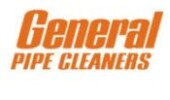
Myths & misconceptions
October 1, 2015 | By Tim Keane
Understanding the true nature of outbreaks associated with building potable water systems.
With the release of ANSI/ASHRAE Standard 188-2015 Legionellosis: Risk Management for Building Water Systems, an often ignored and serious issue associated with building potable water systems is getting a lot of attention.
A common misconception is that legionnaires’ disease (LD) outbreaks are caused almost exclusively by cooling towers or HVAC systems. This is not true. A significant amount, if not a majority of LD outbreaks, are actually caused by potable water systems.
Recent outbreaks in Canada that received a lot of press include an apparent potable water outbreak in a Nova Scotia apartment building, and cooling tower related outbreaks at a Scarborough nursing home and one in Quebec City.
Cases of LD associated with cooling tower outbreaks are typically identified because there is usually a high rate of associated illness with dozens to hundreds of people getting sick in a short period of time. Outbreaks associated with potable water are just as often not identified because these outbreaks can be as few as a handful of people getting sick over days or weeks or longer.
A study in 2003 tested pneumonia cases admitted to 15 hospitals across Canada. The results were very interesting. Of the 850 pneumonia patients tested 28 (3.2 per cent) had LD. What was very interesting in this study was that Western provinces, which were thought to have a lower incidence of LD, had a higher incidence rate with 11 cases out of 277 patients (3.9 per cent) compared to Eastern provinces with 17 out of 573 (2.9 per cent).
Another common misconception is that because LD does not appear in the news too often, the number of cases must be declining. In fact, the annual incidence of LD cases has increased dramatically. A 2011 CDC study found that U.S. LD cases increased 217 per cent from 2000 to 2009. Another CDC study, a study of waterborne diseases associated with drinking water and non-recreational water from 2009 to 2010, found that LD accounted for 58 per cent of outbreaks, 42 per cent of illnesses, 96 per cent of hospitalizations, and 100 per cent (all) deaths.
Litigation associated with Legionella cases has increased dramatically over the past decade as well. I have been involved in many LD litigations and in most of these plumbing engineers, contractors and builders were brought into the litigation. As stated above, over the past decade this has become a real and growing issue.
Another all too common misconception is that designing plumbing systems to reduce the risk of Legionella means extra costs and less efficient systems. In fact, the same items that are recommended for engineering design to reduce the risk of Legionella colonization are also recommended by most engineering experts for water and energy savings. If you are surprised by any of the information here, do not feel badly. The lack of awareness regarding this serious issue is pervasive in public health, the healthcare industry, non-healthcare industries, associations, code development and trades.
There are very good Legionella guidelines, legally recognized ‘standards of care’ published on that are more than a decade old. These U.S. ‘standards of care’ include OSHA (1998), ASHRAE 12-2000 (2000), Joint Commission (2001) and CDC (2003), to name a few. All of these Legionella guidelines are scientifically based and are useful and effective tools for Legionella control in plumbing design.
The new ANSI/ASHRAE Standard 188-2015 Legionellosis: Risk Management for Building Water Systems will have an immediate impact. It will help increase awareness in the plumbing industry and will hopefully result in beneficial steps to reduce the plumbing industry’s risk of negligence litigation associated with this issue. The long term result should be improved plumbing codes, plumbing system design and plumbing products that reduce the potential for Legionella to grow in plumbing systems.
Hot water heater manufacturers address the ‘failure to warn’ scald negligence risk associated with their product by ensuring every hot water heater manual has a full page or more on scald risk. But LD issues in the U.S. have been largely ignored, despite being associated with many different plumbing products, especially those that temper the water, reduce flow, destroy disinfectants, or allow potential for cross-connection between hot and cold water. The plumbing industry is much more concerned and aware of scalding issues even though rates of potable water system issues associated with scalding are almost insignificant when compared to LD.
Some plumbing component manufacturers aware of the market opportunities are improving existing products and developing new products to address these issues.
Tim Keane is with Legionella Risk Management, Inc. He is internationally recognized as an expert in Legionella control and has investigated numerous legionnaires’ disease outbreaks in North America. An original member of ASHRAE 188 committee, Keane has authored numerous papers and presented at scientific and industry meetings on the issue. He has provided training to engineers, plumbing designers and building operators for over a decade on best practices for controlling Legionella in building water systems. This article is adopted from an article in Viega Voice.




